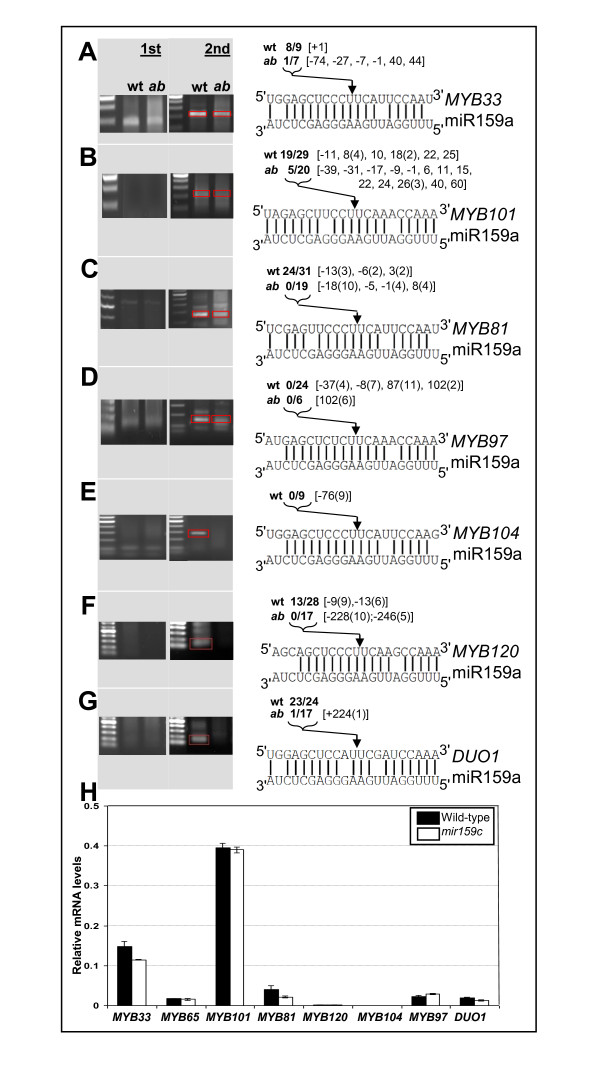Figure 5.
miR159 cleavage assays of potential target genes. Inflorescence purified mRNA from wild type and mir159ab was ligated with rapid amplification of 5' complementary DNA ends (5'-RACE) adapters and subject to 5'-RACE PCR. The products from first (1st) and nested (2nd) rounds of PCR were analysed by agarose gel electrophoresis. DNA from the nested PCR reactions was either directly cloned or the expected size PCR products gel purified before cloning (indicated by red box). Clones were then sequenced and mapped. The sequence similarity of each target is shown compared to miR159a. Numbers in bold indicate the proportion of clones out of the total number analysed that mapped to the canonical miR159 cleavage position (indicated by arrow) either in wild type (wt) or mir159ab (ab). Numbers inside square brackets indicate the position of any further clones relative to the miR159 cleavage site, with (-) numbers indicating fragments that map upstream of the miR159 cleavage site and (+) numbers indicating fragments that are further downstream of the miR159 cleavage site. Numbers in round brackets indicate the number of multiple clones found at that position. Analysis was carried out for: (A) MYB33, (B) MYB101, (C) MYB81, (D) MYB97, (E) MYB104, (F) MYB120 and (G) DUO1 (MYB125). (H) Real-time quantitative (qRT)-PCR analysis of mRNA abundance of putative miR159c target genes in wild type (black bars) and mir159c (white bars). Analysis was performed on RNA extracted from inflorescences with measurements being the average of three replicates with error bars representing the standard error of the mean.

